by The History Chicks | Sep 30, 2012 | Biography Episode, Episode, Podcasts
Often listed as merely an asterisk in history, Lady Jane Grey did have a part in the tale of the Tudors and in the succession of the crown. A teeeny tiny part, but a part nonetheless. Her young life and limited time on the throne may have been short, but it was long on drama. Did she end up remembered as the Nine Day Queen because of manipulation and lust for power? Whose? Was she a puppet or did she know what she was doing? The brief life and rule of this teenage royal is worth a bit of a chat, don’t you think? We did.
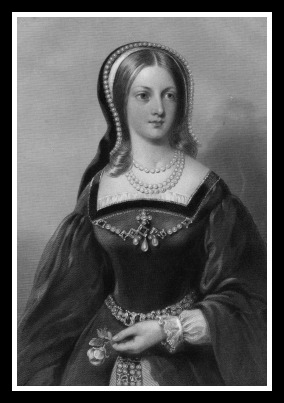
Jane Grey was born in October of 1537 (or perhaps in 1536) to Lord Henry and Lady Frances Grey. If you like a little title with your history, that would be the Marquees of Dorset and Frances Brandon, niece to King Henry VIII. Frances’ mother was Mary- the sister of Henry- and her father was Charles Brandon, Duke of Suffolk and life long frat bro of Henry. Later, after his and Frances’ brothers’ deaths, Frances would inherit the titles and she and Henry would become the Duke and Duchess of Suffolk .
Jane was also born about the same time as her cousin Prince Edward, son of Henry VIII. Linking Edward to Jane was an easy move on the part of her parents. Cousins marrying was far from unheard of, and Jane was raised with this goal in mind. To add a little more incentive to the mix – as the only son of the king, Edward was next in line to the throne. They had so much in common- Edward was was raised Protestant- just like Jane. If you have paid any attention to our ongoing Tudors series (and you should, it’s very interesting) religion plays a big part in the story. (And we always explain more in our podcast than in these notes).
Jane and her sisters Katherine and Mary (yes, we have heard those names before) were educated at home, taught to read Latin, Greek, French, Italian and groomed for well placed marriages that would bring the family more power. At nine, Jane’s guardianship was given to Katherine Parr, the then-wife of Henry VIII. Upon his death, and Katherine’s subsequent marriage to Thomas Seymour (we cover this in the Four Wives podcast) Jane’s wardship was turned over to the Seymours. Why? Because it was thought that this was the best way to arrange a marriage between Jane the new king, Edward VI- a marriage that would suit all parties involved.
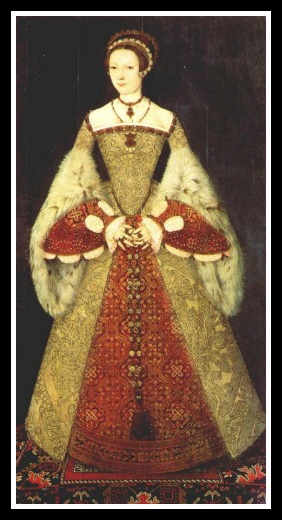
This portrait is often cited as being of Jane Grey, but there is much dispute that it is, in fact, of Katherine Parr. Actually, a great number of portraits that were believed to be Jane were proven to be someone else. Rather than be frustrated,we think it's fun to watch what we think was known reveal itself to be something else entirely. It's like a game!
But Katherine died in childbirth a short time later. And Thomas followed her to death when he was executed a year after that. Jane’s guardianship was up for grabs again, and who better to secure her future as queen than the chief counselor to King Edward, John Dudley, the Duke of Northumberland.
Dudley was a very powerful man in a sweet position, who wanted to remain that way. He knew that if Edward produced an heir, Edward’s sisters, Mary or Elizabeth, would not rule, toss him out…or worse. But if he could marry Jane to the king- who was also in line to the throne (via her mother who was willing to let it pass to Jane) he might just be able to hold onto all that was near and dear to him. Like his head.
But his plan was flawed. Edward became very ill and it was clear he would not live to marry, let alone produce an heir.
So in a swift coordinated effort with Jane’s parent’s-Dudley married 15 year-old Jane off to his only marriageable son, Guilford. It was a hot mess of a wedding that also married off his daughter and one of Jane’s sisters to well-placed men. When Edward died very shortly afterward, Dudley did a fancy dance of deceit – badda bing, Jane is Queen. Everyone is happy.
Except just about everyone who wasn’t related to Jane. The people were scratching their heads, “Queen Who?”
Except Jane who never wanted to be Queen and was frightfully unprepared for the position.
Oh, yeah, and except for Mary who foiled a plot of Dudley’s to have her thrown in the Tower of London and knew that it was her turn to rule. Mary knew that she was entitled to the crown, and she had the support of the people behind her (We do cover all of this time in the Mary I podcast).
For nine days Jane was Queen Jane. And then Mary took care of that.
Mary tossed Jane and Guilford in the tower, where they remained for several months. It wasn’t horrible living conditions, but it was imprisonment. Rumor has it that this tribute, in the Beauchamp Tower, was carved for his wife by Guilford himself . This humanizes him a bit ( which his legacy totally needs).
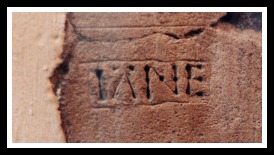
Courtesy Lara E. Eakins at Tudorhistory.org (see link below)
At first, Mary did not want to execute them. However, an ill-fated attempt to over-throw Mary -led by Jane’s own father- made Mary think that this decision was necessary.
On February 12, 1554, less than a year after being imprisoned, Lady Jane Grey and her husband Guilford were beheaded.

The Execution of Lady Jane Grey by, Paul Delarouche (This one we know is her, her name is in the title)
TIME TRAVEL WITH THE HISTORY CHICKS
An website with an easy read of her life, Ladyjanegrey.org .
Or this one with a very lengthy description, as well as some links to outside sources (although not all the links are currently functioning) EnglishHistory.net .
And finally, a really thorough one about all things Tudor, Tudorhistory.org
Want to travel around through the Tower of London (and other historic places of England?) not exactly like being there, but much simpler. HistoricRoyalPalaces.org
Ooh, an internet museum? Love that, lots of clicking to do on this one, although it doesn’t look like it has been updated recently. But really, unless there is new information, that’s not entirely necessary, right? Lady Jane Grey Internet Museum
Tweet what, you say? We love it when we find an active twitter for one of our women- Lady Jane Grey Info.
Of course we have some book recommendations, have you just met us?
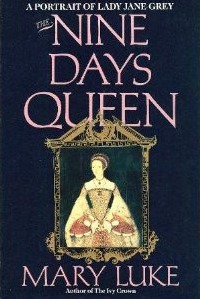
Non- Fiction: The Nine Days Queen by Mary Luke
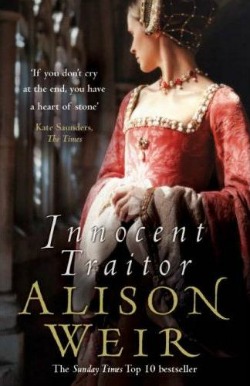
Fiction- Innocent Traitor by Alison Weir
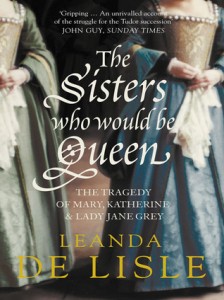
The Sisters who would be Queen by, Leanda De Lisle (Non-fiction)
And a movie, that isn’t exactly historically accurate (are any of them?) and we dare you not to have Princess Bride quotes running in your head if you watch it!
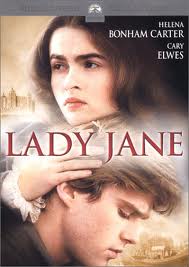
1986- Lady Jane with Helena Bonham Carter and Cary Elwes
by The History Chicks | Sep 16, 2012 | Episode, Podcasts
Before she became the first Queen Regnant of England, before she was labeled illegitimate, she was, quite simply, Princess Mary of England – the apple of her father’s eye. But, ahh, nothing is simple for those Tudors. Nothing.
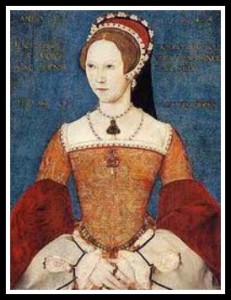
A young Mary Tudor, future Queen Mary I
We discussed the early life of Mary Tudor in the Catherine of Aragon podcast-you might want to check that one out first. In a nut shell (and we use that term pretty accurately): Henry Tudor married a Spanish princess, Catherine of Aragon, who just happened to be the widow of his dead brother. Catherine had several pregnancies, but only one child survived birth and infancy: Mary, who was born on February 18, 1516. Henry, desperate for a male heir and thinking that another wife could bring him that, went to extremes to sever his ties with Catherine.
But before he did, Mary was his ” pearl in the kingdom”. He doted on her and set her up like the princess that she technically was. She was raised royal- finest of everything and traveled from one estate to the next with her entourage. But the Princess life Mary knew ended with her parents marriage. Her new step-mom had it out for her, more so once a step-sister, Elizabeth, entered the world.

Henry and Mary had a complicated relationship- when it was good, it was very very good, and when it was bad it was rotten, (And we thought Sarah Boldger made a great Mary in the Tudors TV show so we are sticking her in here)
But Step-Mummy Dearest couldn’t produce that male heir, so Daddy ended that marriage faster than the first. Step-Mom #2 was kind to Mary and gave her a little brother but she died from complications of childbirth. Mary got along well enough with #3, but that marriage didn’t stick and #3 was transformed into an Aunt. Step-monster #4 wasn’t around long enough for Mary’s distaste of her to cause too much trouble, and Step Mother #5 was the fairest, and kindest of them all and saw Daddy King to his death. With that, Mary’s ride on the Step-Momcoaster came to a complete stop. Little brother Edward became King, and Mary set off to a well provisioned life. (See our podcast and shownotes from Episode 24: Last Four Wives for more details about this time.)
Mary had inherited quite a bit from both of her parents. From her mother she had her deep Catholic faith, and a stubborn streak that helped her hold her ground. From her father she had gained great wealth, much land…and a stubborn streak. During Henry’s life Mary and he had many years where the two battled with stubborn and manipulative weaponry. After his death, she put those tools away during her brother’s reign.
And then he died. King Edward VI ruled for only six years and died at the age of 15. Because of his young age, a Regency Counsel made most of the decisions for him in regard to ruling. A Counsel made of men. Some of those men with ambition and drive and lust for power. As with everything, we do go into detail in the podcast about all of this and sum it up here: upon Edward’s death there was some confusion as to who would succeed him. Henry VIII had mapped out the line in his will-Mary would be next. But members of the Counsel schemed a way around that, and for a very brief time that person was determined to be Lady Jane Grey.
Mary was having none of this. She whipped her royal blood into a well executed bid for the crown, and won. (This is the extremely abridged version).
At the age of 37 Queen Mary I was crowned.
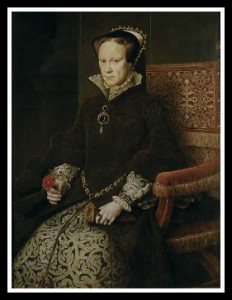
Queen Mary I by, Antonis Mor
First up on her To-Do list: Convert England and her realm back to Roman Catholicism. Papa and Brother King had allowed Protestant faith to become the official religion, but Mary was a very serious Catholic. She had a few hurdles in the way but worked with Parliament to make it so, (number one…get it?) She ultimately threw her royal weight around and enforced heresy laws which allowed those practicing religion other than, and speaking out against the religion of the land to be executed. Specifically, burned at the stake.
It’s not a pretty time in history. Despite the nickname that would follow her through time- Bloody Mary- it wasn’t the first time this law had been practiced. Her own father and brother had also executed many for similar religious reasons. (And don’t get us started on what her Spanish grandparents did.)
Also up on Mary’s list: Find a husband and produce an heir. She checked off the former with Prince Phillip II of Spain, but the latter was never to be. She had two phantom pregnancies and never had a child.
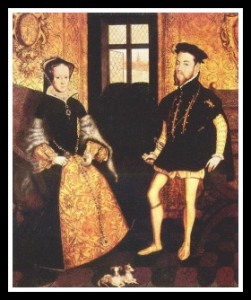
This is the odd portrait that we discussed in the podcast
Mary ruled for five years. In that time she had a complicated relationship with her half-sister and next in line for the throne, Elizabeth. Her relationship with her husband was also strained- he didn’t seem to be in it for more than political gain, and she was unable to provide an heir. By the end of her life, he was living and ruling in Spain and their time together had been minimal at best.
Mary died at the age of 42, and Elizabeth I was crowned. Mary’s original tomb was ruined over time. When Elizabeth died, James I buried both sisters together in the same tomb and that is where they lie now. With an effigy of ELIZABETH atop them both.
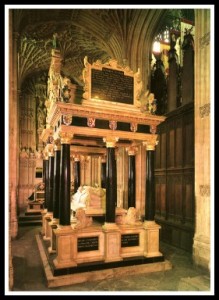
Final resting place of Mary and Elizabeth
Time Travel With The History Chicks
Want to get a Mary I ditty stuck in your head? Horrible Histories has one for you.
Good site for middle grades (or a quick read ) and LOTS of extras to click on: Tudorhistory.org.
Of course there is the Showtime series, The Tudors where Mary’s story is shown with a heavy hand for the dramatic, not quite historically accurate but always riveting. If you are a fan, or want to discuss it, check out TheTudorsWiki.com
Books! We know you love your books and these are the ones that we recommended during the podcast:
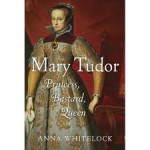
Mary Tudor: Princess, Bastard, Queen by, Anna Whitelock

The First Queen of England by, Linda Porter

The Tudors by, G.J. Meyer
Just because we can: Like Mary’s mug? At this writing Seaway China Company is sold out, but maybe you can find one of these Royal Doulton mugs to use at work. Especially handy if you have the unpleasant task of firing someone. (Royal Doulton has an entire line of Royal mugs like this.)
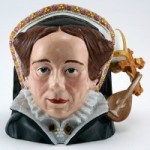
Is it just us? She looks a little tired, right?
You might want to research the origins of some of your favorite nursery rhymes. Mary, Mary Quite Contrary has a little debate surrounding it. Was it about Mary Tudor, or her Aunt Mary Queen of Scots? You decide. Mother Goose Club has a lot of info or Secret Rhyme Origins has a bit, too.
As always, our music comes courtesty of MusicAlley. Visit them at Music.mevio.com



















